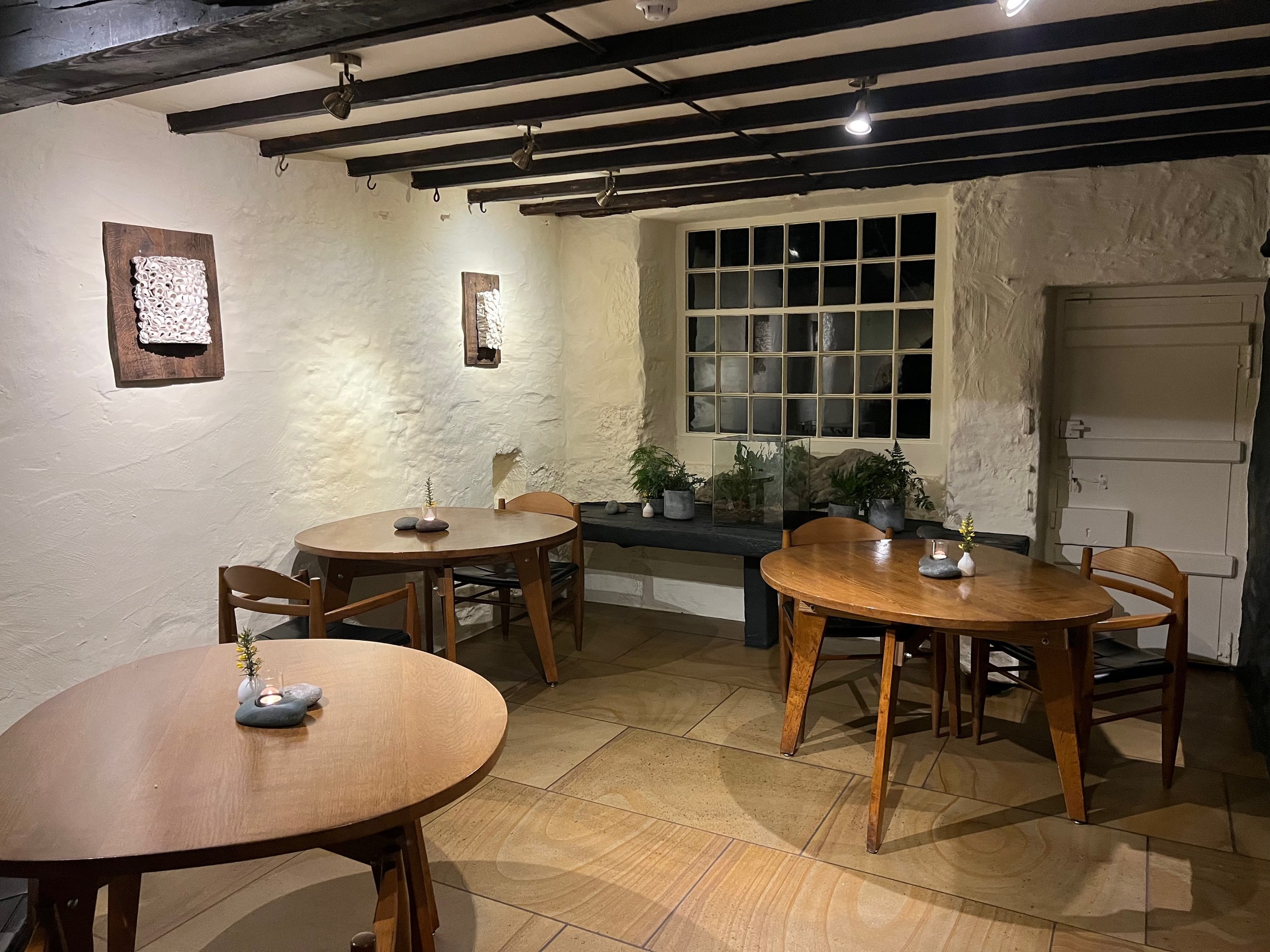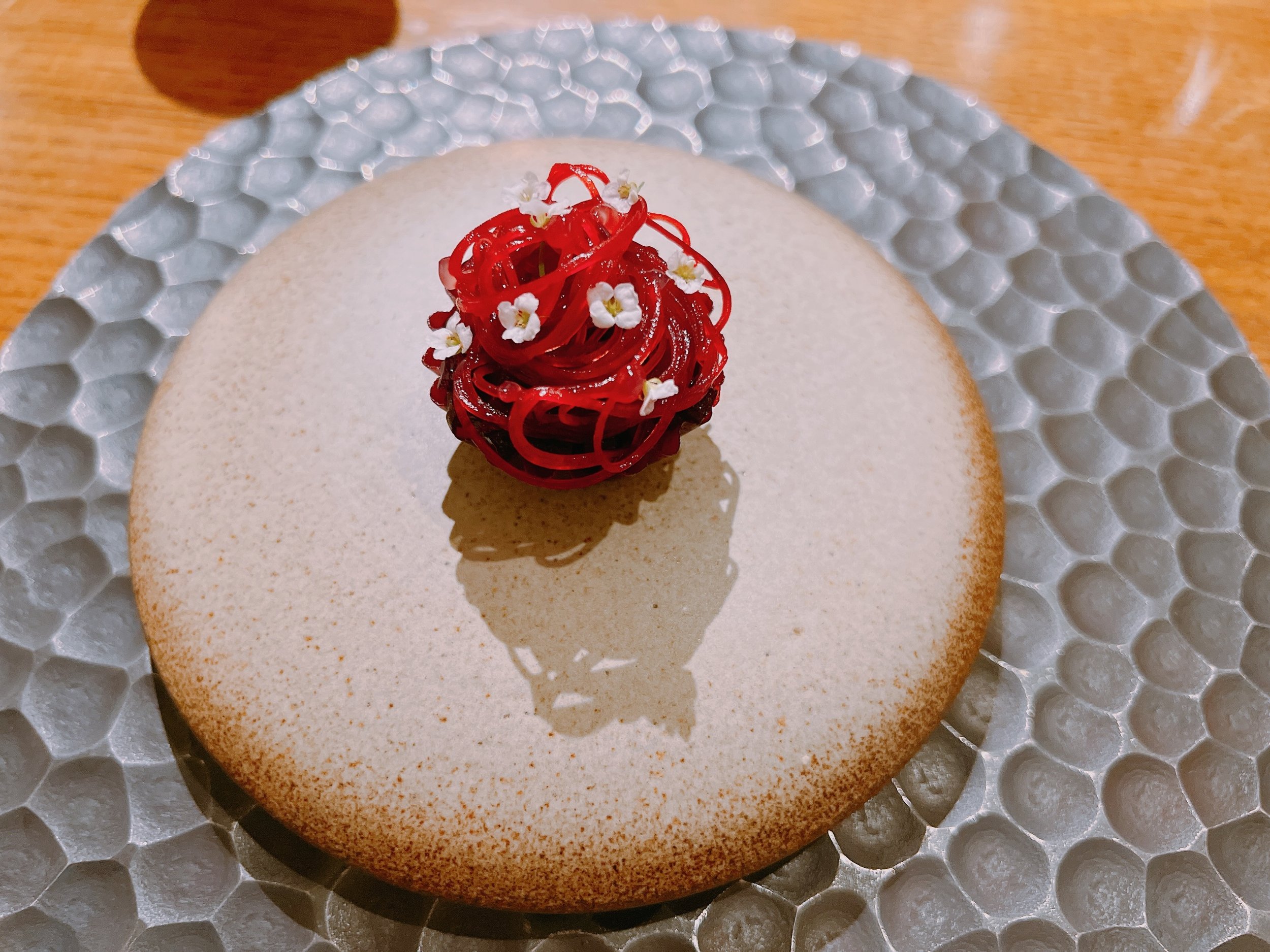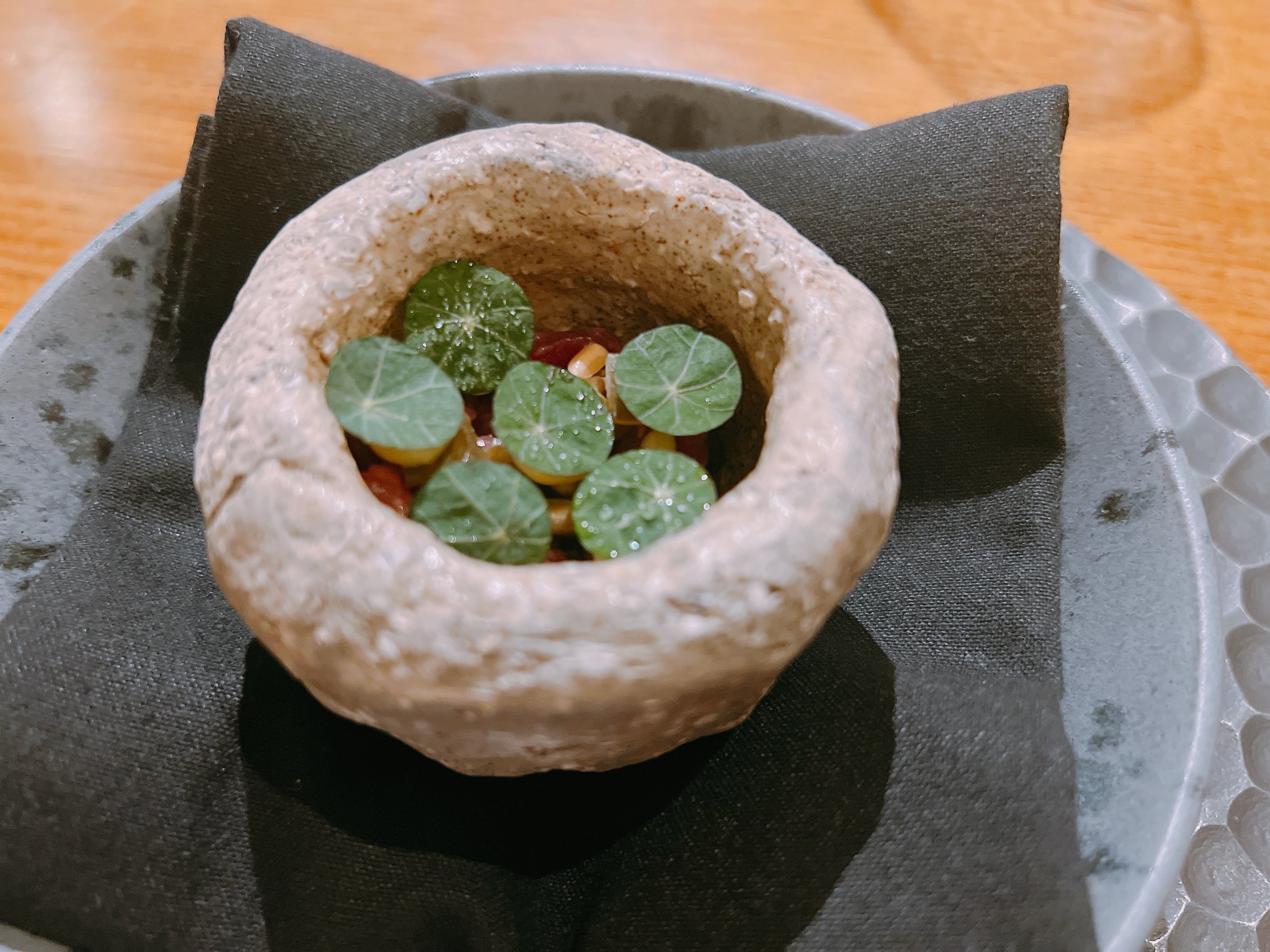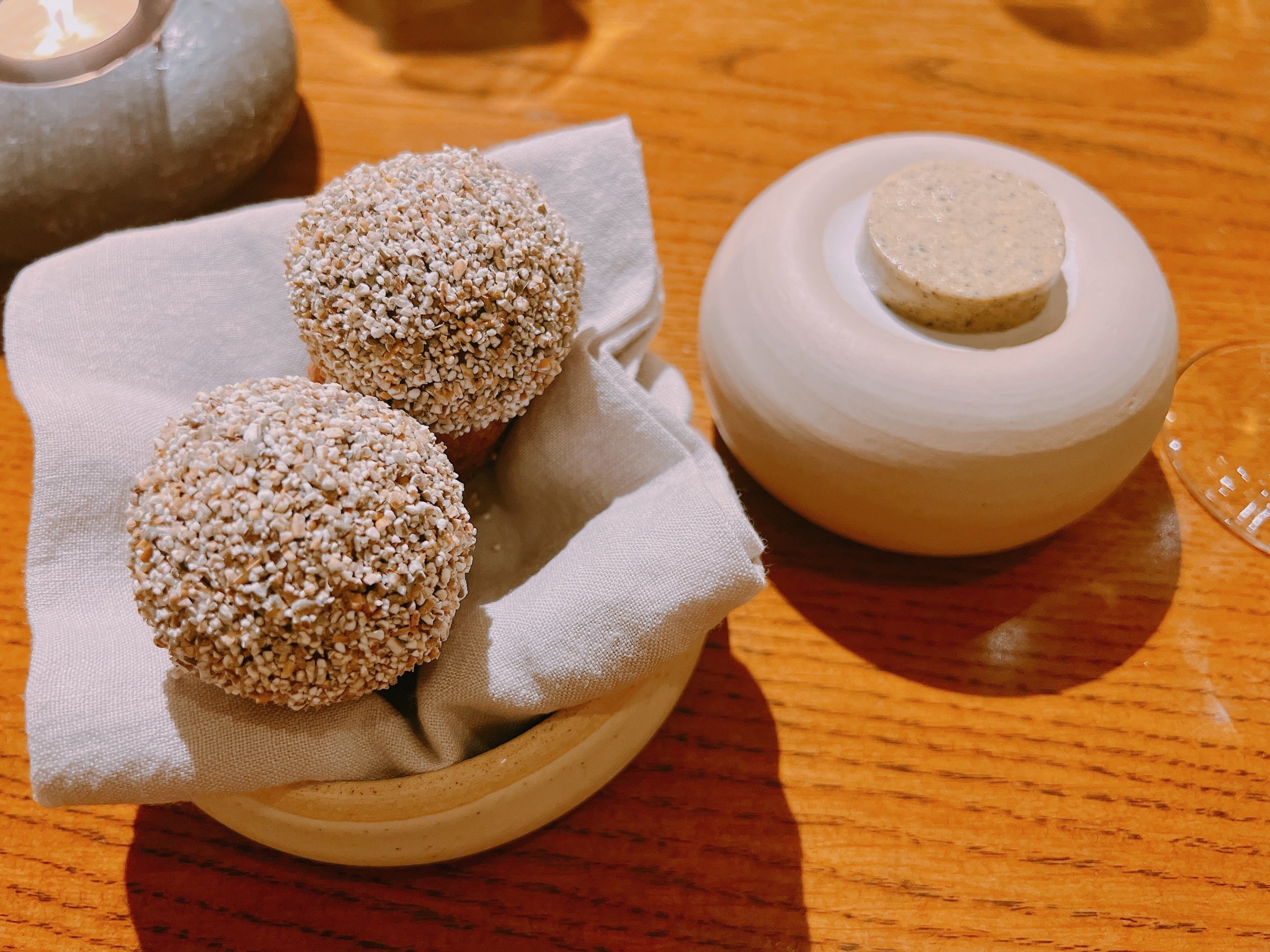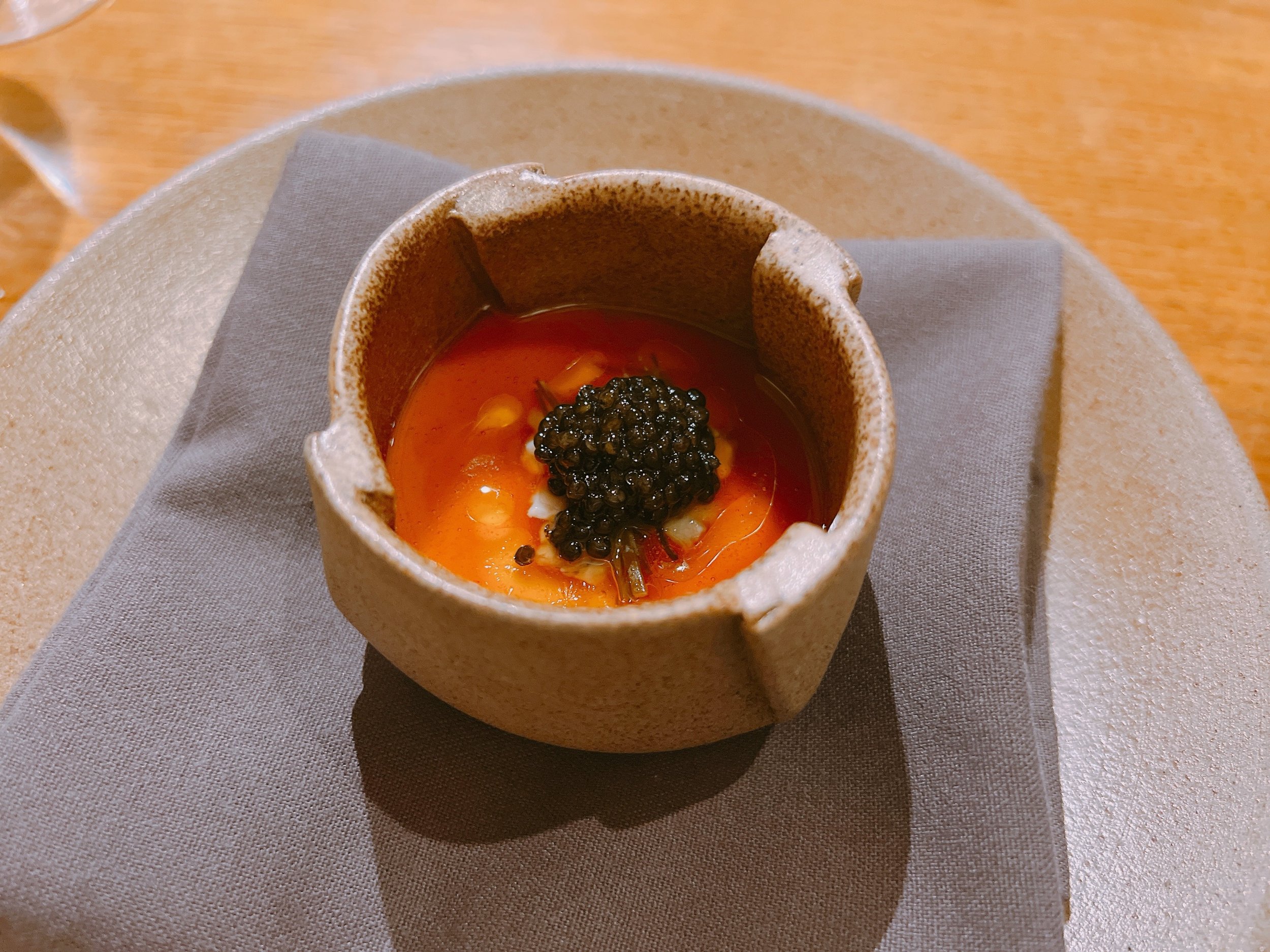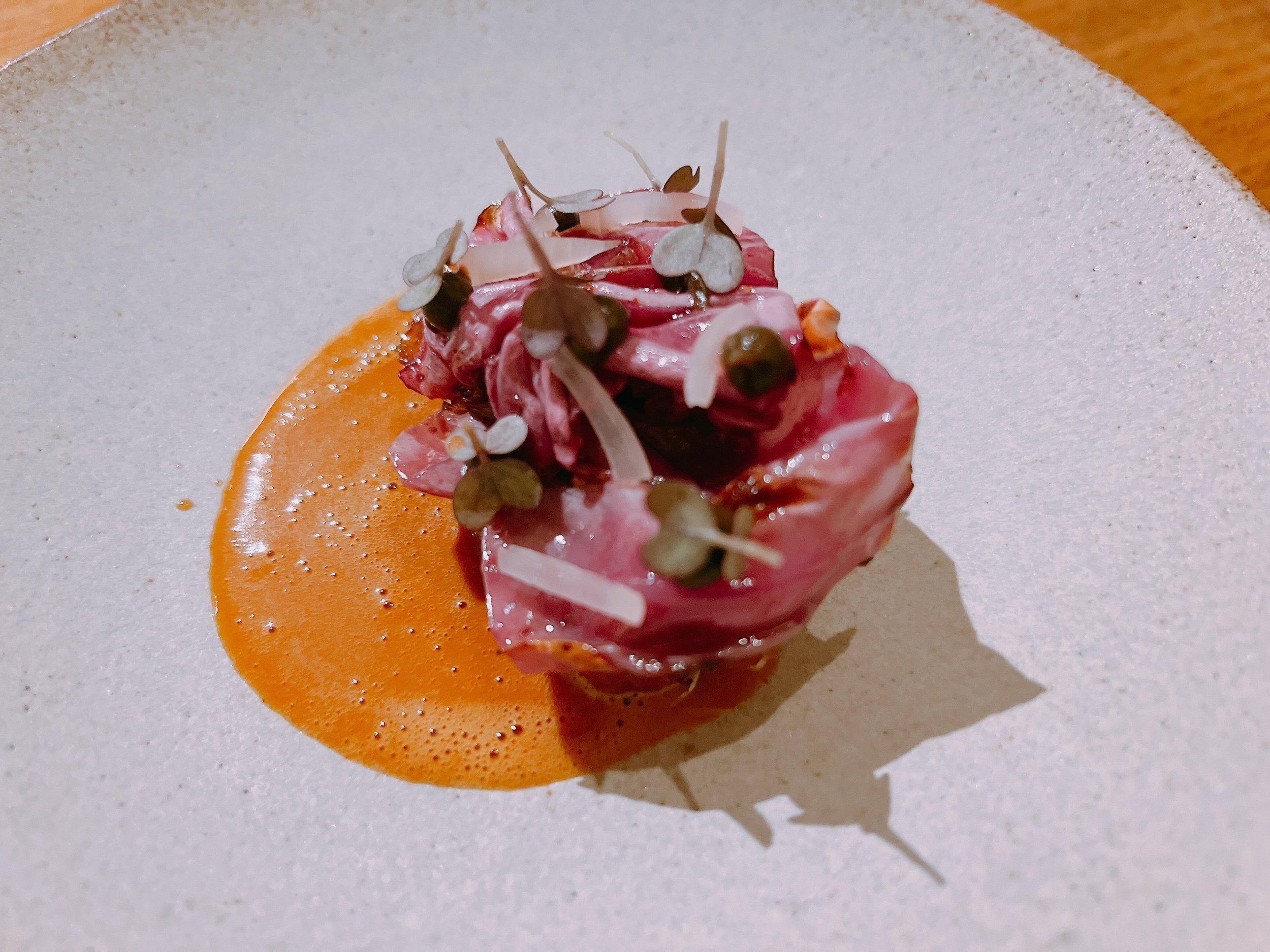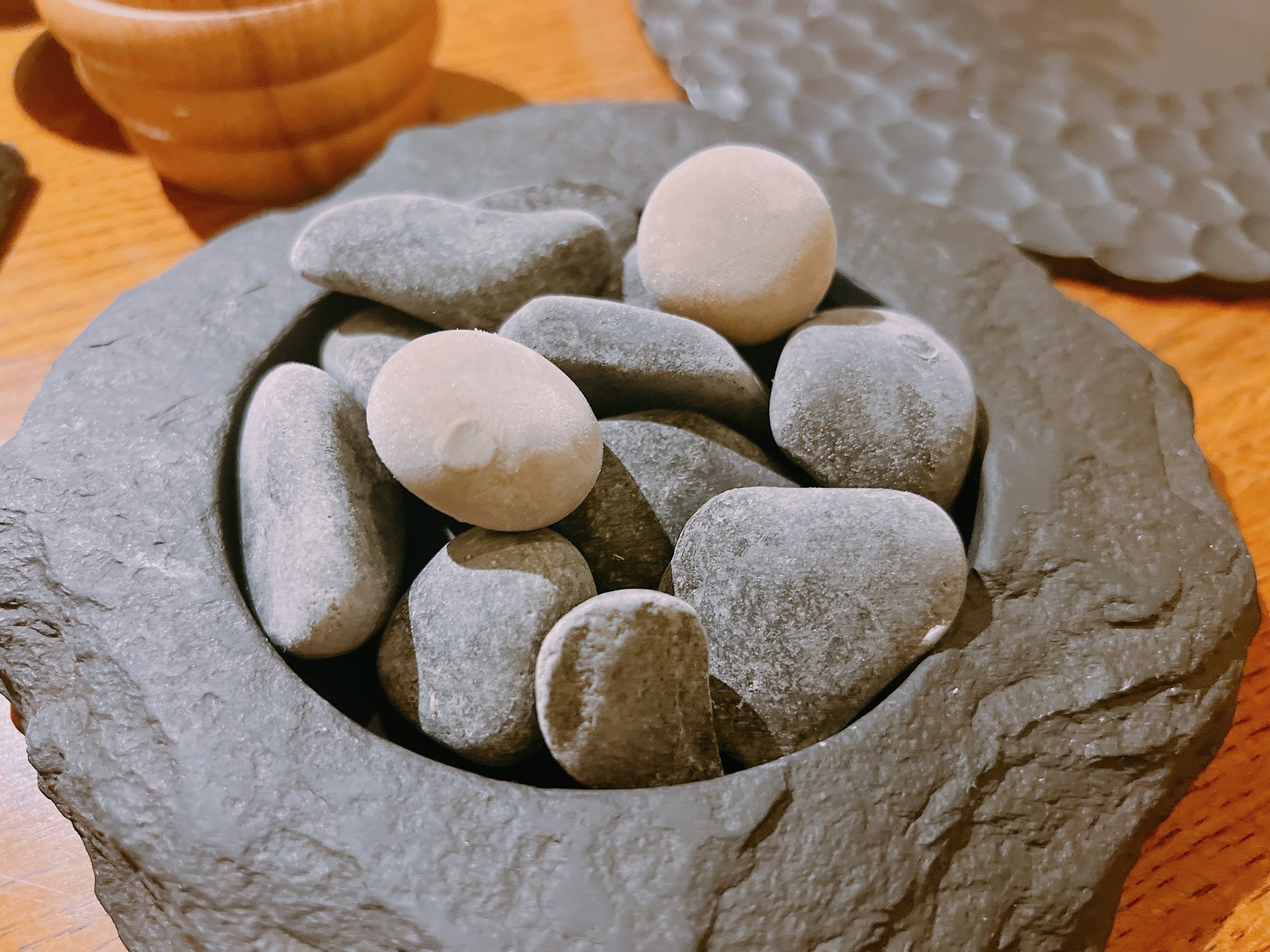L'Enclume - Cartmel
Rating: 19/20
Where: Cartmel, UK
When: Dinner for 2 on 1 December 2022
Cost per Person: Tasting menu 250 GBP, Wine Pairings 90-275 GBP
Accolades: 3 Michelin Stars
Why: Amazing seasonal farm-to-table cuisine, relaxed service
Low-lying fog blankets lush green meadows that are enclosed by walls of rough-hewn stones. Herds of sheep brave the cold air that promises rain. It’s early December in the Lake District, one of the most picturesque parts of Northern England, unless the ever-present fog decides to hide the view. Summer would probably be a better time to visit, but we’re not here for the great outdoors. The small town of Cartmel is home to Britain’s latest three-star Michelin restaurant, called “L’Enclume”. And it’s the first such restaurant in the UK that truly requires that special journey. Half a day of traveling got us here from near Munich: first a flight to Manchester, then a 90 minute train ride and finally half an hour in a taxi. Renting a car would have been a bit faster, but we didn't trust ourselves to reliably drive on the “other” side of the street while jetlagged.
L’Enclume opened twenty years ago, and the chef has built a little empire in the small town since, including another one-starred restaurant and a few rooms that allow for overnight stays. These are just a short walk away from the restaurant. “Enclume” is French for “anvil” - the restaurant is housed in a former blacksmithery. That explains the layout of the dining room with lots of nooks and crannies and its rustic decor. With around 15 tables, the restaurant has a decent size, and especially lunch tables seem to be available on short-ish notice.
The French name of the restaurant is probably due to the fact that “The Anvil” would have sounded too much like a pub. But it's also a bit misleading: the cuisine is not French, but rather hyper-local farm-to-table. Most of the food served is from the restaurant's farm situated just a mile away. That also means that the dishes are very seasonal, during our visit in December they incorporated their fair share of root vegetables and pickles. But as we saw on our trip to Schloss Schauenstein exactly one year ago that doesn’t have to be a bad thing.
During our visit, the restaurant just had a single tasting menu, and the only food-related choice was whether to add a cheese course at the end of the dinner. Three wine pairings were offered as well (for 90, 135, and 275 GBP), and we tried the two pricier ones. The wines were all pretty good, and at price points commensurate with the pairings' costs. There were even two wine pairings offered for the cheese course, each comprising a white, red and sweet wine each. An interesting idea, but in hindsight, I would have been just as happy with only the dessert wine among the three.
Informed at the beginning to expect a 15-course menu, we braced ourselves for an overabundance of food, but thankfully that wasn't to be the case. First, that count included all the amuse bouches as individual courses, and second, the portion sizes were quite reasonable all throughout. We had no problem adding the cheese course at the end without feeling too full.
(A side note: the recitation of the ingredients of each dish was quite fast at this restaurant, and the local accent often strong, so in the following descriptions, some ingredients might be missing or just flat-out wrong.)
Our first amuse bouche was a beetroot tartlet, filled with pickled beets, smoked pike perch roe, rose petals and other herbs. It was accompanied by a cup of beet root juice seasoned with celeriac. The tartlet was nicely crunchy, and its filling full of flavor: sweet, sour, salty, the roe adding a nice texture. The juice was perfect vegetabley goodness, savory and healthy tasting. Altogether a wonderful start to our meal 20.
Next came a fritter made from lovage that was filled with pork confit and sitting on an emulsion of lovage. The emulsion tasted very fresh and delicious, but the fritter was a bit on the fatty side and somewhat messy to eat. The meat flavor was nice, though 18.
Berkshire (I think) cheese, somewhat reminiscent of pecorino, was the star of the next amuse bouche. It was layered with croissant dough, pressed into a bar, baked, and then topped with even more shaved cheese. The result was a tiny bit sweet, and effectively the best cheese croissant ever. Very, very good 19.
A bowl of venison tartare arrived next. Seasoned with coal oil, it had a lightly smoky taste. Fermented cucumbers, sunflower seeds and an emulsion of sunflower seeds added some crunchy texture. Small nasturtium leaves provided decoration. The deer was lovely, and not gamey at all 17. The pescatarian version replaced the deer by toasted buckwheat. This made the dish seem more like a light salad, and much less exciting 15.
Hand-dived Orkney scallops (one of the few ingredients that were not local) were served with a sauce made from scallops, parma ham, garlic, elderflower vinegar, kelp oil and other ingredients. Under the scallops, we found shredded winter squash. Truffles from Wales (of all places!) had been shaved on top. The scallop was excellent, cooked to be full of flavor even without the sauce. But there was no reason to avoid the sauce: it was also fantastic, not too acidic, and went perfectly with both scallop and pumpkin. The pumpkin was completely savory, no sweetness was to be found. Our only nitpicks were that the dish could have been served warmer, and that the truffles didn't seem to add much. Nitpicks indeed 19.
Artichokes were the star of the next dish, and they appeared in at least two forms: dried on the outside and creamy in the center of the dish. These different textures and flavors went very well together: crunchy, creamy, almost meaty. Very good 19. (My wife thought the dish was too salty and an 18.) The paired sake was an excellent accompaniment, and brought out smokiness in the dish.
The artichokes were served with some pumpernickel bread and a toasted yeast butter. The warm bread was pretty good, but the butter stood out as truly amazing 17. Apart from the cheese course, this was the only time that we were served any bread.
A signature dish of the restaurant came next. A seaweed custard contained mussels, poached oysters and sugar kelp strands and was topped with an onion broth, bone marrow and caviar. The pescatarian version omitted the bone marrow, and was very reminiscent of a Japanese chawanmushi. Adding the bone marrow however changed the dish quite a lot, it became more savory, meatier and creamier; this was no Japanese dish anymore, but something that stood on its own. Excellent, I only wished that it had been served warmer 19.
Cornish cod was served with a sauce containing shrimp, rainbow chard and lemon verbena. This sauce was excellent (almost 20 by itself), and I thought the fish and shrimp were cooked perfectly as well. Only a touch more salt could have improved this dish 19.
Time for the main course, an eight day aged duck. A small cut of duck breast was topped with red cabbage, walnut puree and slices of onions. Next to it was a duck sauce containing sweet woodruff. This duck was not my favorite: I liked that it was lean, but unfortunately it was also somewhat mealy in texture (15 maybe). The toppings were much better, the pickled cabbage particularly good, so overall 17.
The “pescatarian version” of the duck was a bbq'ed turbot with fishbone sauce on the side, served with the same pickled cabbage. I couldn't taste the bbq aspect of the dish, but did prefer the fish over the duck, the sauce in particular was great 18. My wife thought the fish was overcooked, and rated this a 17.
Another duck course followed, with a calabrese duck leg, salad leaves, pickled onion seeds and a duck broth, all accompanied by a crumpet filled with more duck meat. All very savory, the crumpet with a stronger duck flavor than the soup; I’m just generally not a duck fan 17. On the pescatarian side, all duck meat was missing, and a vegetable broth had been used, which turned this into a really nice, strongly flavored dish 18.
The first of three desserts was a frozen champagne rhubarb compote topped with chocolate and yogurt crumbles. This was a nice and light dessert, just what you wanted after a long dinner, with the crumbles adding some nice texture 18.
Next came damson plums, a peach leaf cream, and ... (server rattles off other ingredients really quickly) … topped by a fall-colored leaf. The marzipan-y cake was much lighter than the orange cake we had on the preceding night, the cream nice, the plum very tart. Overall this dish wasn't particularly sweet for a dessert 17.
Finally, we received the "anvil". A coin-shaped dessert was filled with caramel, caramelized apples and surrounded by spruce and caramel juice. Again a light, creamy, not too sweet dish. The apples were fresh, and the paired Riesling brought out the tart apple flavor 18. The number “20” on the dish refers to the restaurant’s 20th anniversary in 2022.
We went for the optional cheese course, and all cheeses came from the British Isles. Particularly good were an ash-covered cheese from Scotland, and the house-made brie filled with a Welsh truffle paste (18+ for the latter). Oatmeal cookies served with the cheese were savory and had a good texture.
Petit fours concluded our dinner. An apple mangold ice cream cone was crunchy and sweet 17. "Stones" made from ice cream were also good 17. Black currants topped with crumbs were light and yogurty 17. Finally, a chocolate praline filled with geranium honey was served on a bed of bee pollen. The honey had a really nice flavor 18.
Overall: An excellent dinner that justified the lengthy trip. This is farm-to-table done right, with local, seasonal ingredients, and dishes that use these ingredients in imaginative ways - no "traditional" dishes here, most everything has sprung from this kitchen's creativity. Several dishes were near perfection, and I appreciated the fact that the dinner was pretty light overall. Especially in the winter months, dishes often tend to be on the heavy side, but not here. Also, with the challenge of limited fresh produce during this time of the year, I think this menu did a fantastic job of not feeling repetitive at all. Bravo 19.
